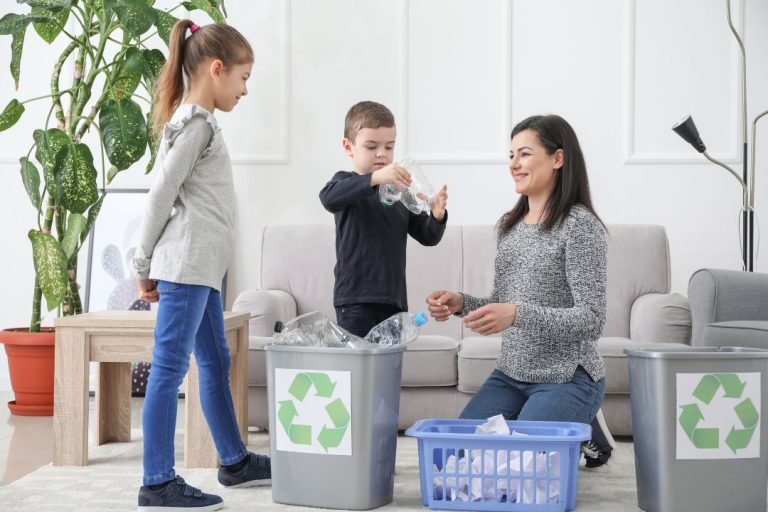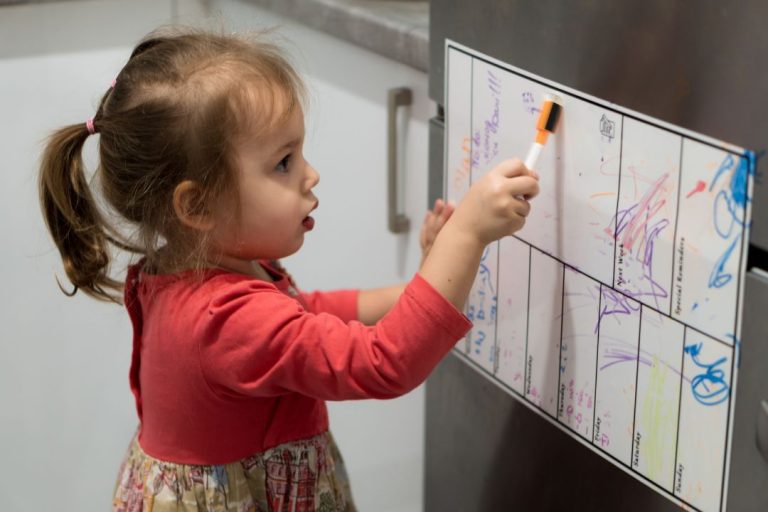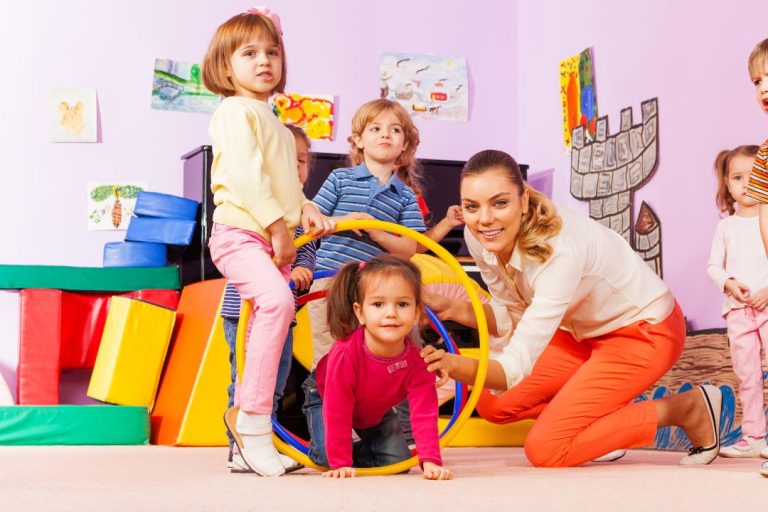Multicultural Lessons for Preschool: Embrace Diversity Early!

Multicultural lessons for preschoolers foster cultural awareness and diversity appreciation. These activities prepare young minds for a globally connected world.
Engaging preschoolers with multicultural lessons is a powerful way to introduce them to the diverse tapestry of the world’s cultures. From storytelling that includes global folklore to art projects using traditional patterns, these lessons can be both fun and informative.
Music from different countries can fill the room, while children learn about various traditions and languages through play. It’s about encouraging curiosity, empathy, and respect for people from all backgrounds. Early education settings provide the perfect stage for these cultural explorations, setting the stage for open-mindedness and social inclusivity in future generations.
Embracing Diversity In Preschool Education
Diversity isn’t just a buzzword; it’s a critical component of education that shapes young minds for a world that is rich in cultural, social, and intellectual variety. When it comes to preschool education, incorporating lessons on diversity isn’t just beneficial—it’s essential. By weaving the threads of diversity and inclusion into the fabric of early childhood education, we lay the groundwork for a more understanding and cooperative society.
Importance Of Starting Early With Diversity Lessons
The preschool years are a critical period for social and emotional development. Introducing diversity at this stage helps children understand and accept differences, fostering empathy and compassion from a young age. Embracing diversity in the classroom sets the tone for a lifetime of inclusivity and respect. Youthful minds are remarkably adaptable and impressionable; with the right guidance, they learn to celebrate, rather than fear, the diverse world around them.
How Diversity Prepares Children For A Global Society
- Enhanced Cultural Awareness: Children exposed to diverse cultures develop a broader perspective of the world.
- Adaptability: Learning about different backgrounds fosters adaptability and flexibility in new environments.
- Language Skills: Exposure to multiple languages at an early age boosts cognitive development and communication abilities.
- Global Readiness: A grounding in diversity equips children with the skills and understanding needed for collaboration in a globalized community.
By embracing a global approach to education, we ensure our children grow into adults who can thrive in a multicultural landscape and contribute meaningfully to an ever-connected world.
Impact Of Inclusivity On Young Minds
Creating an inclusive environment in preschool has far-reaching impacts on young learners. Children learn to appreciate the unique qualities of their peers, fostering a classroom culture free of prejudice and discrimination. This positive approach to diversity builds confidence and self-esteem in all students, as they feel valued for who they are. Moreover, inclusivity encourages cooperation and collaboration, important traits that support both academic and social success. Ultimately, inclusivity in early education sows seeds for a future of unity and respect amongst the diverse tapestry of humankind.
Diversity Early On Shapes Worldviews
Introducing children to diverse cultures and perspectives at a young age is not just beneficial; it’s imperative. A preschool environment rich in multicultural experiences can profoundly affect young minds, fostering inclusivity and understanding from the very start. By consciously integrating diversity into early education, we lay the groundwork for a more compassionate and interconnected world.
The Role Of Preschool In Setting The Foundation For Multicultural Understanding
Preschool is the first significant social experience for many children. It serves as the prime stage where young learners can absorb essential values that will influence their outlook on life. In these formative years, educators have the unique opportunity to imbue respect and appreciation for diversity within their students. The exposure to different cultures, languages, and traditions at this critical time encourages empathy and promotes acceptance of diversity.
- Cultural Storytelling: Stories from various cultures provide insight into different ways of life, helping children connect emotionally with others’ experiences.
- Festivals and Celebrations: Participating in and learning about different festivals enriches understanding and creates excitement about diversity.
- Multilingual exposure: Introducing multiple languages helps expand cognitive abilities while building a foundation for future language learning.
Diversity As Part Of The Daily Learning Process
Incorporating multicultural lessons into daily activities is an effective way to normalize diversity for preschool-aged children. By weaving various cultural elements seamlessly into everyday learning, the concept of diversity becomes a natural part of children’s worldviews. Imagine a classroom where the maps on the wall reflect the world’s true diversity, where dolls of different ethnic backgrounds are the norm, and where music from all corners of the globe fills the air – this environment empowers young learners to recognize and celebrate differences as a valuable part of their daily lives.
| Activity | Multicultural Element | Learning Outcome |
|---|---|---|
| Art Projects | Inclusive themes and materials | Enhances creativity and provides a platform for self-expression |
| Food Tasting | Cuisines from around the world | Encourages open-mindedness and curiosity about other cultures |
| Language Games | Basic words in multiple languages | Facilitates language development and intercultural communication skills |
Multicultural Lessons For Preschool
Embracing diversity in early childhood education enriches learning and fosters mutual respect and understanding. Multicultural lessons for preschool are essential in shaping young minds to appreciate the rich tapestry of the world’s cultures. By incorporating these lessons into the curriculum, educators lay the groundwork for a more inclusive and empathetic society, starting with our youngest learners.
Integrating Multicultural Education Into The Curriculum
Implementing a multicultural curriculum in preschool settings involves weaving diverse perspectives across different domains of learning. Teachers can introduce a range of cultures through stories, music, art, and play. It’s important to select materials that authentically represent various cultures, avoiding stereotypes, and showcasing a broad range of traditions and experiences.
- Storytime: Choose books featuring characters from various cultural backgrounds.
- Music and Dance: Explore songs and dances from around the world.
- Art Projects: Use art to teach about different cultural symbols and practices.
- Linguistic Fun: Introduce simple words from languages other than English.
Examples Of Age-appropriate Multicultural Activities
Crafting activities that are both engaging and suitable for preschoolers is key to a successful multicultural program. Highlighting holidays, customs, and everyday life from different cultures can make learning enjoyable and accessible.
| Activity | Description |
|---|---|
| Cultural Dress-up | Children explore traditional attire and discuss its significance. |
| International Snack Time | Tasting and learning about snacks from different countries. |
| World Map Exploration | Interactive games using a world map to locate countries and continents. |
Resources For Preschool Educators On Diversity
Preschool educators require a variety of resources to deliver compelling multicultural lessons. From books and websites to training programs, an abundance of materials can aid in crafting an inclusive curriculum.
- Professional Development: Workshops and seminars on cultural competence.
- Online Portals: Websites offering lesson plans and activity ideas.
- Diverse Book Lists: Curated lists of children’s literature featuring diverse characters and themes.
- Community Resources: Local cultural organizations that can provide authentic experiences and materials.
Interactive Activities To Teach Diversity
Embracing and teaching diversity at a young age can set the foundation for a more inclusive and understanding future. Preschool is the perfect platform to introduce children to the beautiful tapestry of cultures that make up our world. Engaging them with Interactive Activities to Teach Diversity not only broadens their horizons but also instills respect and appreciation for different backgrounds and ways of life. From colorful culture-focused art projects to vibrant multilingual story times, let’s explore creative and engaging ways to introduce diversity in preschool classrooms.
Culture-focused Art Projects: Celebrations And Symbols
Culture-focused art projects provide a visual and hands-on approach to learning about different cultures. Children can explore:
- Festivals: Illustrating various cultural celebrations such as Diwali, Chinese New Year, or Carnival with paints and crafts.
- Flags: Creating flags from around the world, discussing their symbols and colors, and what they represent for a nation.
- Cultural Symbols: Crafting traditional items like Native American dream catchers or Japanese origami, understanding their significance and origins.
These art projects encourage children to recognize and respect the diverse ways people celebrate and express their heritage.
Multilingual Story Times To Promote Language Inclusivity
Storytime is a beloved part of any preschool experience, and it can be a powerful tool for promoting language inclusivity. Consider:
- Bilingual Books: Integrating books that offer text in two languages fosters an appreciation for linguistic diversity.
- Guest Speakers: Inviting native speakers to read stories provides authenticity and models correct pronunciation.
- Interactive Stories: Using puppets and props to engage children in a tale told in a different language.
Through multilingual story times, children gain exposure to the sounds and rhythms of languages other than their own, promoting inclusivity and understanding.
Music And Dance From Around The World
Music and dance are universal languages that transcend cultural boundaries, making them ideal for celebrating diversity. During interactive sessions, preschoolers can:
- Listen to traditional songs from different cultures, learning about the instruments and, occasionally, the language of the lyrics.
- Watch and participate in dances that originate from various countries, understanding how movement can express stories and traditions.
- Experience the joys of creating music through simple instruments, such as drums, maracas, or flutes, crafted in styles representative of different cultures.
By engaging with music and dance, children not only have fun but also build an auditory and physical connection to cultures different from their own.
Nurturing Empathy And Inclusion
In a world as interconnected as ours, teaching children about empathy and inclusion from a young age is crucial. Preschools are not only avenues for early education but serve as the first social melting pots for many children. By integrating multicultural lessons into the preschool curriculum, we lay a strong foundation for an inclusive society. These activities not only celebrate diversity but also cultivate respect and understanding among young learners.
Empathy-building exercises for preschoolers
Empathy-building Exercises For Preschoolers
Empathy, the ability to understand and share the feelings of others, fosters harmonious relationships. Preschool educators can incorporate storytelling that incorporates characters from diverse backgrounds, encouraging children to step into the shoes of others. Interactive discussions post-story can highlight feelings and moral lessons.
- Emotion Charades: A game where children express various emotions non-verbally and others guess the feeling, promoting emotional literacy.
- Friendship Circles: Regular gatherings where each child shares something about their culture or personal experience, building bonds and understanding.
- Collaborative Art: Projects that require teamwork and appreciation for each child’s unique contribution.
Celebrating diverse families and communities
Celebrating Diverse Families And Communities
Celebrations are a vibrant way for children to learn about different cultures and families. Planning a ‘Cultural Day’ allows children to experience various traditions through food, music, and clothing. This not only enhances their cultural awareness but also instills pride in their own heritage.
- Invite family members to share stories or artifacts from their culture.
- Introduce a ‘Recipe of the Month’ featuring dishes from different cultures.
- Create a ‘Community Quilt’ where each square represents a family’s background, stitching together a unique tapestry of the class’s diversity.
Role-play scenarios to understand various perspectives
Role-play Scenarios To Understand Various Perspectives
Role-play is a powerful tool in teaching empathy as it encourages children to act out and respond to various real-life scenarios. Crafting situations where preschoolers can embody different characters helps them grasp the concept of perspective.
| Scenario | Purpose | Outcome |
|---|---|---|
| A child moves to a new country | To understand the challenges of being in a new environment | Encourages children to be welcoming to newcomers |
| Someone has a dietary restriction | To explore the reasons behind different diets | Promotes respect for individual choices and needs |
| Various holiday celebrations | To highlight the diversity in holiday traditions | Expands knowledge of global cultures and celebrations |
Inclusivity Beyond The Classroom
Welcome to a deeper dive into how we can extend the principles of inclusivity and multicultural understanding outside the regimented walls of the preschool environment. It’s crucial that children learn to embrace diversity not only during classroom hours but also in the world they explore every day. Through nurturing inclusive environments at home and in the community, preschoolers can develop a stronger, more respectful appreciation for the myriad cultures that enrich our lives.
Encouraging Diversity In Playdates And Social Interactions
One of the most effective ways to instill values of inclusivity in preschoolers is by fostering diversity in their personal interactions. Children learn by example and experience, making diverse playdates a powerful teaching tool. Here are some strategies:
- Encourage your child to make friends from different backgrounds.
- Organize playgroups that include families of diverse heritages.
- Choose play materials that represent various cultures to facilitate inclusive play.
- Encourage discussions about the different traditions and languages encountered during these social interactions.
Initiatives For Parent Involvement And Education
Parents play a pivotal role in teaching tolerance and cultural appreciation. Preschools can support this journey by launching initiatives designed to bolster parent engagement. Examples include:
- Hosting educational workshops that highlight the benefits of multicultural awareness.
- Creating resource lists of books and media that promote diversity and inclusiveness.
- Establishing support groups where parents can share experiences and strategies in nurturing an inclusive mindset.
Community Events That Highlight Cultural Diversity
Another significant aspect of ingraining inclusivity in young minds is the active participation of the wider community. Events centered around celebrating cultural diversity can profoundly impact young, impressionable minds. These community gatherings can:
| Event Type | Potential Impact |
|---|---|
| Cultural Festivals | Introduce children to new foods, music, and traditions. |
| Art Exhibits | Showcase diverse artistic expressions and storytelling. |
| Parades | Celebrate the pride and heritage of different communities. |
Building a just and accepting society starts with the tiniest members of our community — our preschoolers. By embedding the values of diversity and inclusivity in early childhood experiences beyond the classroom, we not only educate a child but also enlighten a generation.
Frequently Asked Questions Of Multicultural Lessons For Preschool
Why Introduce Multicultural Lessons In Preschool?
Introducing multicultural education in preschool cultivates respect and understanding. It helps young children recognize and celebrate diversity at an early age. This foundation builds more inclusive communities for the future.
What Activities Teach Preschoolers About Cultures?
Activities like international music and dance, storytelling from around the world, and cultural craft projects are effective. These enjoyable experiences expose children to global traditions while fostering curiosity and empathy.
How Can Parents Support Multicultural Education?
Parents can support by sharing their own cultural practices, reading diverse books at home, and encouraging open dialogues about different traditions. Participation in cultural events also enhances learning.
Can Food Be Used In Multicultural Lessons?
Absolutely, food is a tangible way to explore cultures. Cooking simple, traditional dishes with preschoolers exposes them to global tastes and traditions. It also leads to discussions about geography and people’s lifestyles.
Conclusion
Embracing multiculturalism in preschool sets the stage for open-mindedness and inclusivity. Through these early lessons, children learn the beauty of diversity. Parents and educators, let’s commit to nurturing cultural appreciation from the start. Cultivate this young garden – our future as a harmonious society depends on it.

Emma combines her teaching experience with her writing skills to produce engaging and informative content. She covers a range of topics, from classroom management to innovative teaching techniques.






